Maizuru Brick Park 舞鶴赤れんがパーク
|
|
|
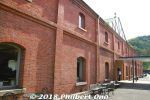
Opened in 2012, Maizuru Brick Park is a complex of 12 large brick buildings near the Japanese navy base. They were built from 1901 until the 1920s to store munitions (arsenal) for the Imperial Japanese Navy. Eight of the buildings are National Important Cultural Properties and a few of them have been renovated and opened to the public. This is the first building you enter, the Maizuru World Brick Museum (赤れんが博物館).
Hours 9:00 am–5:00 pm, closed Dec. 29–Jan. 1. 15-min. walk from JR Higashi-Maizuru Station (JR Maizuru Line and Obama Line). Parking available.
Map: https://goo.gl/maps/ZuFd1eXrNds
|
|
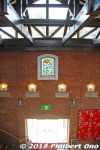
Inside the huge Maizuru World Brick Museum.
|
|
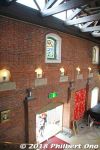
Very high brick wall.
|
|
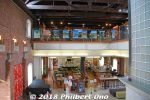
Inside the huge Maizuru World Brick Museum. It was used to store torpedoes made by munitions factories in Maizuru. Restaurant on the groundfloor, museum on the upper level.
|
|
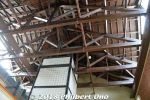
Ceiling of the huge Maizuru World Brick Museum.
|
|
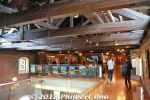
The museum is on the upper level.
|
|
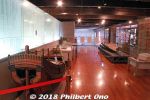
Maizuru World Brick Museum on the upper floor. Exhibits local historical artifacts. There's no English though.
|
|

Ancient dugout canoe found in Maizuru.
|
|
|
|
|
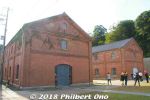
These brick buildings are not open to the public.Maizuru Brick Park, Kyoto Prefecture.
|
|
|
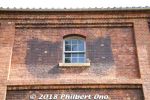
During World War II, the brick buildings were painted black to make them less noticeable. The black paint still remains here and there. Amazing that these buildings have survived. Maizuru's weapons factories and navy base got heavily bombed by American planes in July 1945, but not this arsenal.
|
|
|
|
|
|
|
|

Inside Brick Building No. 5 (赤れんが5号棟), the park's largest building. Built in 1918 to store torpedoes, depth charges, and mines. After the war, it was used by a warehouse company.Now used as an event hall and cafe space (cafe open only on weekends). It can be rented to hold exhibitions or events (concerts, weddings, etc.). It has been reinforced with these steel girders for earthquake resistance. National Important Cultural Property.
|
|
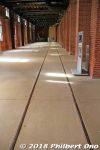
Brick Building No. 5 had rails.
|
|
|
|
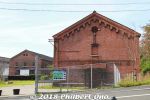
This part of the park had buildings owned by the Japanese government. Not open to the public.
|
|
|
|
|
|
|
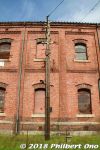
The brick park has been used as a backdrop in Japanese movies.
|
|
|
|
|
|
|
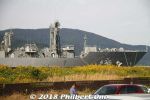
Maizuru Brick Park is right next to the Japan Maritime Self-Defense Force's Maizuru navy base.
|
|
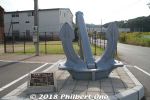
Old anchor for the Shirane destroyer that was retired in 2015.https://en.wikipedia.org/wiki/JDS_Shirane
|
|
|
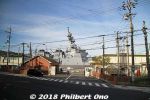
Japan Maritime Self-Defense Force's Maizuru navy base (舞鶴基地) where the Hyuga helicopter carrier, Aegis ship, and other navy ships are based.This base is in charge of maritime security along the Sea of Japan's coast from Yamaguchi to Aomori Prefectures.
|
|
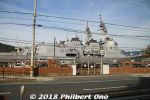
This is the Atago, a guided missile destroyer.
|
|
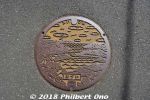
Maizuru manhole shows Maizuru Bay in northern Kyoto Prefecture.
|
|
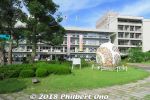
Maizuru City Hall is next to Maizuru Brick Park.
|
|

How to promote crab.
|
|
|
|
|